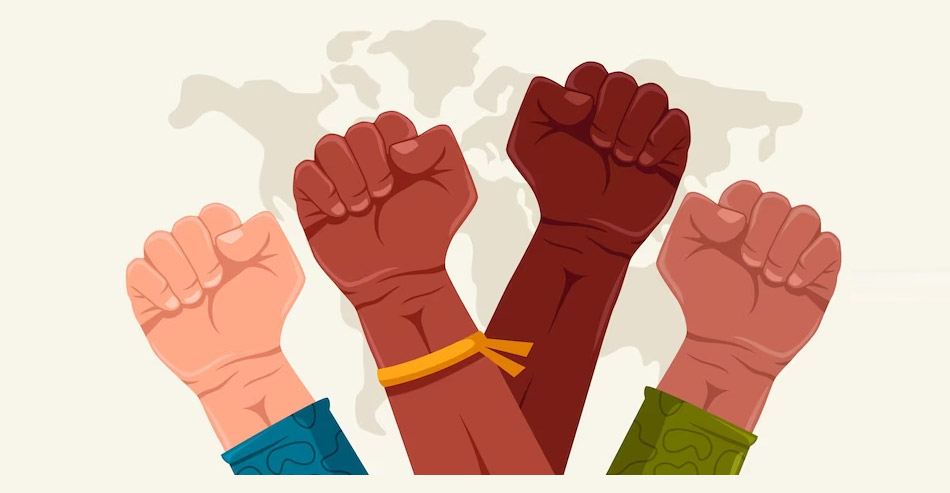
The Modern-Day Civil Rights Movement: Progress, Challenges, and Goals
The civil rights movement has been a defining feature of American history, as it has fought to end racial discrimination and promote equality for all. The movement began in the 1950s and 1960s, during a time of legal segregation and widespread racial injustice. Although significant progress has been made since then, there is still much work to be done to achieve true racial equality in the United States.
History and Background of the Civil Rights Movement in the United States
The civil rights movement of the 1950s and 1960s was a mass mobilization of people and organizations, which used various forms of civil disobedience to challenge the legal and institutionalized discrimination against African Americans. The movement was marked by numerous protests, sit-ins, and marches, and was led by prominent civil rights leaders such as Martin Luther King Jr., Rosa Parks, and Malcolm X.
The movement achieved important victories, such as the end of legal segregation through landmark Supreme Court cases like Brown v. Board of Education and the passage of the Civil Rights Act of 1964 and the Voting Rights Act of 1965. These legislative victories paved the way for greater equality and social justice for African Americans, but the fight for civil rights did not end there.
The Current State of Civil Rights in the US
Despite the progress made by the civil rights movement, the United States continues to grapple with systemic racism and social injustice. Minority communities, including Black, Indigenous, and people of color (BIPOC), continue to face discrimination in various aspects of life, including education, employment, healthcare, and the criminal justice system.
Police brutality is also a significant issue facing minority communities, with numerous cases of police violence against BIPOC individuals gaining national attention in recent years. The murder of George Floyd in Minneapolis in 2020, at the hands of a police officer, sparked nationwide protests and renewed calls for police reform and racial justice.
The Impact of Recent Events on the Modern-Day Civil Rights Movement
The murder of George Floyd and the subsequent protests have had a significant impact on the modern-day civil rights movement, serving as a catalyst for increased activism and mobilization. The Black Lives Matter movement, which emerged in response to police violence against Black individuals, has gained widespread support and recognition, and has brought renewed attention to issues of racial injustice and systemic racism.
Social media has played a critical role in amplifying the voices of marginalized communities and mobilizing activists to demand change. The use of hashtags like #BlackLivesMatter and #SayTheirNames has helped to raise awareness and build momentum for the movement, while videos of police brutality and protest footage have shed light on the realities of systemic racism in the US.
The Role of Social Media in Raising Awareness and Mobilizing Activists
Social media has become an important tool for activists and organizers to raise awareness and mobilize support for the civil rights movement. Platforms like Twitter, Facebook, and Instagram have enabled activists to share information, organize protests and events, and connect with like-minded individuals across the country.
Social media has also played a role in holding institutions and individuals accountable for their actions. Videos of police violence, for example, have prompted public outrage and led to calls for police reform and accountability. The use of social media by marginalized communities has helped to amplify their voices and bring attention to issues that may otherwise have gone unnoticed.
The Demands and Goals of the Modern-Day Civil Rights Movement
The demands of the modern-day civil rights movement are focused on ending systemic racism and promoting social justice and equality for all. Some of the key demands include:
- Ending police brutality and mass incarceration
- Addressing economic inequality and promoting wealth redistribution
- Ensuring equal access to healthcare, education, and housing
- Protecting the rights of vulnerable groups such as BIPOC and LGBTQ+ individuals is also a key goal of the civil rights movement. The movement seeks to address the intersectional discrimination faced by these communities and to create a more inclusive and equitable society.
The response of governments, law enforcement, and other institutions to the civil rights movement has been mixed. While some progress has been made in terms of police reform and social justice policies, many activists feel that more needs to be done to address systemic racism and inequality. Some have criticized the use of force by police during protests and the lack of accountability for officers who commit acts of violence against civilians.
Despite the challenges, the modern-day civil rights movement continues to gain momentum and achieve important victories. In 2020, a number of cities and states passed police reform laws in response to the protests sparked by George Floyd's murder. The movement has also succeeded in raising awareness about issues such as mass incarceration, economic inequality, and environmental racism.
Conclusion
In conclusion, the modern-day civil rights movement is a vital force for change in the United States. It seeks to address the systemic racism and social injustice that continue to exist in the country and to create a more equitable and inclusive society. While progress has been made, there is still much work to be done to achieve the goals of the movement. By working together and continuing to advocate for change, activists and allies can help to build a better future for all Americans.


